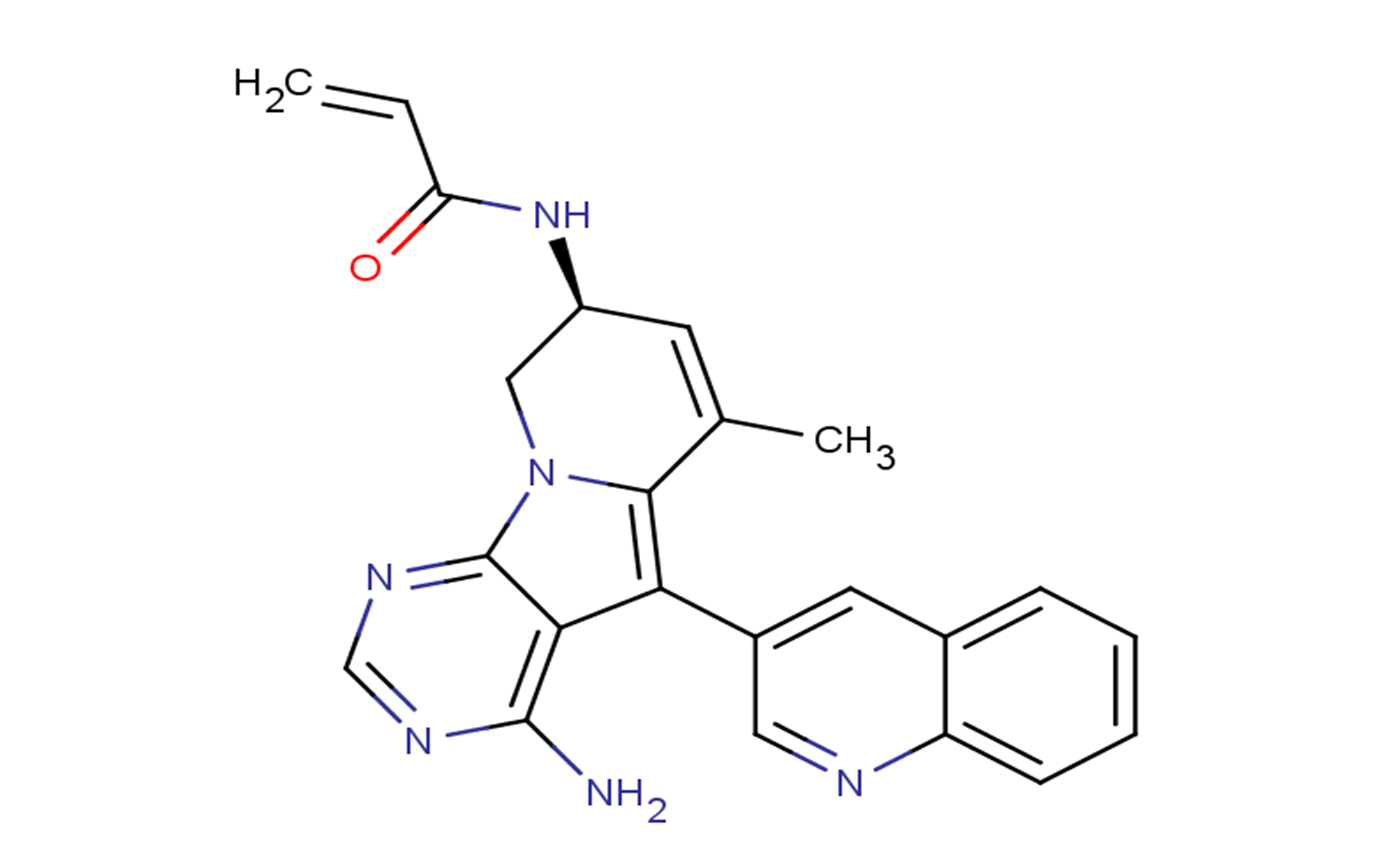
TAS6417
CAS No. 1661854-97-2
TAS6417( —— )
Catalog No. M23746 CAS No. 1661854-97-2
TAS6417 is an EGFR inhibitor and is an efficacious drug candidate for patients with NSCLC.
Purity : >98% (HPLC)
 COA
COA
 Datasheet
Datasheet
 HNMR
HNMR
 HPLC
HPLC
 MSDS
MSDS
 Handing Instructions
Handing Instructions
| Size | Price / USD | Stock | Quantity |
| 5MG | 178 | In Stock |


|
| 10MG | 295 | In Stock |


|
| 25MG | 597 | In Stock |


|
| 50MG | 954 | In Stock |


|
| 100MG | 1467 | In Stock |


|
| 500MG | 2952 | In Stock |


|
| 1G | Get Quote | In Stock |


|
Biological Information
-
Product NameTAS6417
-
NoteResearch use only, not for human use.
-
Brief DescriptionTAS6417 is an EGFR inhibitor and is an efficacious drug candidate for patients with NSCLC.
-
DescriptionTAS6417 is an EGFR inhibitor and is an efficacious drug candidate for patients with NSCLC (IC50: ranging from 1.1-8.0 nM).
-
In VitroApoptosis Analysis Cell Line:PC-9, H1975, BID007, BID019, BEAS-2B cells.Concentration:0-10 μM.Incubation Time:24-48 h.Result:Led to apoptosis via inhibition of mutant EGFR.
-
In VivoAnimal Model:Mice implanted with NCI-H1975 EGFR D770_N771insSVD xenografts.Dosage:50 and 100 mg/kg.Administration:Orally once daily for 14 days.Result:Showed marked tumor growth inhibition with treatment/control (T/C) ratios of 51% and 19%, respectively.
-
Synonyms——
-
PathwayApoptosis
-
TargetApoptosis
-
RecptorApoptosis|EGFR
-
Research Area——
-
Indication——
Chemical Information
-
CAS Number1661854-97-2
-
Formula Weight396.44
-
Molecular FormulaC23H20N6O
-
Purity>98% (HPLC)
-
SolubilityDMSO:125 mg/mL (315.31 mM)
-
SMILESCC1=C[C@@H](CN2C1=C(C3=C(N=CN=C32)N)C4=CC5=CC=CC=C5N=C4)NC(=O)C=C
-
Chemical Name——
Shipping & Storage Information
-
Storage(-20℃)
-
ShippingWith Ice Pack
-
Stability≥ 2 years
Reference
1.Hasako S, et al. TAS6417, A Novel EGFR Inhibitor Targeting Exon 20 Insertion Mutations. Mol Cancer Ther. 2018 Aug;17(8):1648-1658.
molnova catalog



related products
-
AP-III-a4 hydrochlor...
AP-III-a4 (ENOblock) hydrochloride is a nonsubstrate analogue enolase inhibitor with an IC50 of 0.576 uM. AP-III-a4 hydrochloride can be used for the research of cancer and diabetic.
-
(R)-Isomucronulatol
(R)-Isomucronulatol (2H-1-Benzopyran-7-ol), a flavonoid that can be extracted from the leaves of Astragalus membranaceus, Sophora japonica, Sclerotium tigrinum, and Glycyrrhiza glabra, inhibits the proliferation and apoptosis of BMSCs in the TNF-α microenvironment.
-
RAPTA-C
RAPTA-C induces EAC cell cycle arrest and apoptosis via the mitochondrial and p53-JNK pathways, and can be used in the study of breast and ovarian cancer.



 Cart
Cart
 sales@molnova.com
sales@molnova.com


